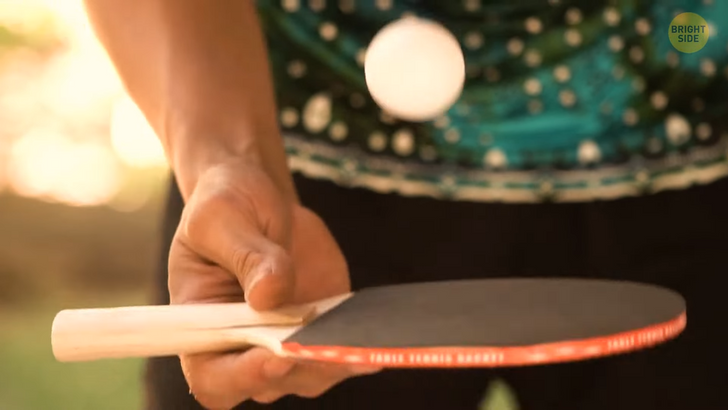I Refuse to Cook Separate Gluten-Free Meals for My Stepdaughter — Now Her Mother Confronts Me

Many amazing things are going on inside your eyes right now. Although an eyeball is pretty small — the size of a ping-pong ball — it hosts more than 2 million working parts.
Check this out — our eyes appeared long before modern gadgets and lifestyle habits were invented. The human body wasn’t initially designed to cope with screen time growing daily.

Therefore, it’s crucial to keep our eyes healthy. In addition to hygiene and proper nutrition, how you look at objects directly affects the quality of your vision. So, let me show you 8 easy exercises you can do anywhere, anytime, to improve your visual behavior. It only takes a few minutes.
No worries, I’m gonna do all of them with you! Remember that your safety is first. So if you experience discomfort at any point, please stop the exercises immediately.
Let’s talk about distance. If I was standing outside your window at a distance of around 100 feet, your brain would use different neural circuitry to observe me.
These days people spend time looking at their gadgets up close. This habit doesn’t allow the vision system to relax well. And suppose you don’t let your lens flatten out. In that case, you may experience headaches, and the neuron chains may reshape with time.

So here’s the first exercise. Go to your balcony or just stand by the window. Ideally, you should open it because the glass filters out a lot of sunlight beneficial for your well-being.
Now, look at the horizon for a couple of minutes. Panoramic vision will allow your lens to expand and stretch. Experts recommend making these breaks every 30 minutes of focused work.
Also, they say that adults should limit screen time to less than 2 hours a day outside of work activities. Sounds like an impossible mission, doesn’t it? Well, we can change.
Your eyes can move thanks to the extra-ocular muscles attached to the eyeball. Six of them are responsible for changing the direction of the gaze, while the seventh controls eyelid elevation. Here’s what you need to do to train these muscles.
Freeze your head in one position. Keeping your eyes open, begin to draw simple geometric figures with your gaze. Do this exercise for at least 1 minute a day to keep your eye muscles elastic.

And now let’s check out the next one. Your visual system is perfectly tuned to motion — not only your own movements but the motion of all things around you. One of the eyes’ superpowers is smooth pursuit — the ability to keep your eyes fixed on a moving object. Our next exercise will help strengthen this ability.
Take any small object in your hand. I’m gonna take this pen. Place the hand in front of your face. The distance should be at arm’s length.
Freeze your head and body in one position and focus all your attention on the object. And now, let’s go ahead and slowly move the pen in random directions: from left and right, up and down. Your eyes should stay focused on the pen and move at the same pace. Move the pen as smoothly as possible.
To challenge your vision even more, try to draw unexpected trajectories. I’m gonna draw some zigzags and infinity signs and write my name. If you wanna make this task harder, ask your friend to move the object for you.
This way, you’ll have to be more focused unless you’re a telepath. Keep on following the thing for a few minutes. You can do it either every day or just from time to time. For example, 2 or 3 times a week.

According to experts, smooth pursuit exercises may help improve and maintain your vision. So, feel free to go outside and admire falling snow or leaves swaying in the wind.
Otherwise, if your eyes get used to only pursuing objects on a flat screen, your natural panoramic vision will worsen over time.
Our next exercise is a “near-far version” of the previous one. Put the pen in front of you up close. Stare at the pen for about 20 seconds and avoid any distraction.
By the way, you can use any object — even your own thumb. And then, 20 seconds later, move the object out to arm’s length and focus again for about 20 seconds. Then slowly move it back to the initial position. Wait for another 20 seconds and repeat it again.
Keep doing this exercise for 5–7 minutes. If you really want to take good care of your vision, you might want to include this exercise in your daily routine.

The cornea gets oxygen directly from the air. In other words, your eyes are literally breathing. Unfortunately, some other impurities, along with oxygen, can also enter the eyes.
Especially when you forget to blink frequently, which may lead to dryness and inflammation. With time this may spoil the vision.
The following exercise seems very simple, but it helps moisturize the eyes and restore the feeling of comfort. Begin to blink with your eyes. Do it actively for about a minute, just like me.
Can you feel any difference? This exercise helps clean and lubricate your eyes and gives them a break from light. Also, it should help regulate blood circulation inside your eyes. You can do it when you feel tension after a long working day.
A complex system in your brain links your alertness with the position of your eyes and chin. When your eyelids are up, and you look up, your brain considers this a wakefulness signal.
So the next exercise sounds pretty simple, but it’s powerful. Let’s check it out. Open your eyelids and raise your eyeballs up. Stare at the ceiling as high as you can.
But don’t force your eyes too much — stop before you feel any discomfort or pain. Now try to hold your gaze up for 10 to 15 seconds.

You can use this trick anytime you feel tired to quickly refresh your focus. But you’ll probably fail if you try this exercise outdoors on a sunny day because the eyes will squint from the sunlight while they need to be wide open.
Also, positioning your computer screen up high — slightly above eye level — may help you feel more awake during the day.
Have you ever noticed that your gaze remains stable when you move your head? This happens thanks to the inner ear.
The vestibular and visual systems work together to send signals from the eye muscles to the balance organs in the inner ear. This is how you maintain overall balance and clear vision and figure out where the floor is and where the ceiling is.
The following exercise works with this area and helps keep it fit. You can either sit down or stand up. Freeze your head and body in one position.
Begin to move your eyes up and down. Repeat this exercise 20 times or so. And now begin rolling your eyes side to side just like me. Let’s repeat it 20 times too.
Here’s another exercise to cheer up your vestibular system. You’ll need a tennis ball or other round object of similar weight and size. An apple, for example. But don’t eat it first.

Focus your eyes on the ball and begin to throw the ball from one hand to another above eye level. Do this exercise at least 20 times and try to follow the ball’s trajectory all the way. But be careful — it shouldn’t land on your face.
The second part of this exercise is a little harder. Throw the ball from hand to hand under your knee 10 times. You can begin from the right knee or the left one.
It doesn’t matter. But don’t forget to switch the knees and do the same amount around the second leg. Great job! And speaking of vision, always remember: You can observe a lot just by watching.











